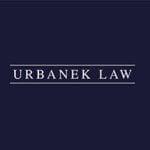-
Overview
The importance attributed to the right of property in the Greek legal system is explicitly guaranteed by the Greek Constitution, according to which, property is under the protection of the State (Art.17 paragraph 1).
The rights deriving from the protection of property, however, must not be exercised to the detriment of the general interest, nor must they infringe the natural and cultural environment’ protection, which are also guaranteed by the Constitution (Articles 17 paragraph 1) & 24) in order to ensure public interest and social peace.
Multiple laws, and particularly the Greek Civil Code – safeguard the creation, transfer, alteration, abolition, and protection of rights in rem and in particular the ownership of real estate property, (as analyzed hereinbelow). Specific mention and reference should be made to (a) Law 4759/2020 on the modernization of the Spatial Planning and Urban Planning Legislation, as currently in force, and (b) Law 4821/2021 for the modernization of the Hellenic Cadastre, as currently in force, which introduces regulations concerning the creation of an electronic system for the interconnection of the Civil Registries with the Hellenic Cadastre, as well as the corrections of inaccurate initial registrations, which, by accelerating the completion of the cadastral process of all properties, the introduction of modern digital services, the Electronic Building Identity, in conjunction with additional regulations, enhance the transactions’ security.
It is also worth highlighting the great importance of the first National Climate Law (Law 4936/2022), which aims to adapt to climate change challenges, to ensure the gradual transition of Greece to climate neutrality by 2050, addressing also the energy crisis and environment’s protection, in conjunction with the Law 4951/2022 for the modernization of the licensing process of Renewable Energy Sources.
The modernization of the Greek legislation, in combination with, (a) the digitization of a quite large part of public sector procedures – through the launch of many electronic applications to facilitate citizens’ transactions, (mainly tax) and (b) the reduction of real estate taxes and the increase of the tax-free amount on gifts/donations and parental donations, gradually lead on the one hand to a strong demand for housing and a rise in rent amounts and on the other hand to a rise in real estate values. In general, despite the global negative effects of the COVID-19 pandemic and the global energy crisis, continue to strengthen and create the conditions for an upward trajectory in the real estate market in Greece.
In 2025, no substantial new legislative measures or interventions were introduced in the field of real estate and property law.
Nonetheless, the year was characterized by the sustained growth of the real estate sector, fostered in part by the beneficial impact of the State’s ongoing initiatives aimed at the digitalization of public administration, the enhancement of transactional transparency, and the strengthening of property rights protection. A pivotal development in this context was Law 5142/2024, enacted at the end of 2024, the provisions of which began to take effect and produce tangible outcomes during 2025. The reforms introduced by this statute significantly accelerated the long-standing process of completing the Hellenic Cadastre, rendering its full operational completion a realistic and attainable objective. An important innovation of the same period was the integration of artificial intelligence (AI) into the Cadastre’s operational framework, particularly in the processing of applications for registrable acts. The application of AI technologies resulted in a substantial reduction in processing times and in the backlog of pending cases, thereby enhancing both the efficiency and the legal certainty of real estate transactions. It is estimated that by September 2025, more than 118,000 administrative decisions had been issued with the assistance of AI-supported systems. Finally, one of the most consequential contributions of Law 5142/2024 was the introduction—under clearly defined statutory conditions—of the possibility of unilateral amendment of horizontal property declarations. This reform addressed a significant number of long-standing urban planning and cadastral irregularities, thereby unblocking numerous properties that had previously been excluded from the market due to legal or technical impediments to their transfer.
-
What is the main legislation relating to real estate ownership?
The basic legislation relating to the ownership of real estate property is found (a) in the private property law, which contains the provisions relating to real estate and the powers of persons over it, (b) in the public property law, which contains principles and rules relating to real estate owned by the State and (c) in the procedural property law, which contains principles and rules relating to the recording and registration of acts relating to real estate property in special transfer registers.
The provisions of private substantive property law, which have as their foundation the distinction between ownership and limited rights in rem, are mainly contained in the Civil Code, which entered into force on 23.2.1946 and was recently amended in accordance with Law 4967/2022 in order to incorporate Directives (EU) 2019/770 and 2019/771 of the European Parliament and the Council of Europe of 20/5/2019 on contracts for the supply of digital content and digital services into the provisions of the Civil Code on sales, by introducing the concept of conformity of the thing sold with the sales contract and the seller’s main obligation to deliver a thing that conforms to the contract.
Some of its main provisions concern:
- the acquisition of ownership of real estate property and all rights in rem, which is effected either in an original manner, provided that, it is not based on the right of another person (e.g. by usufruct, ordinary or extraordinary, annexation, compulsory expropriation, accretion) or in a derivative manner, provided that, it is based on the pre-existing right of a third person (e.g. transfer in rem of property by sale or gift or parental benefit, acquisition of property by inheritance) based on the rule “nemo plus juris ad alium transferre potest, quam ipse habet” (“No one can transfer to another a greater right than he himself has.”).
- the protection of ownership in the event of disturbance or infringement (e.g., an action for possession or a negative action).
(a) However, there are also special laws, which refer to independent and specific issues of private property law, such as: a) horizontal ownership or floor ownership, which is regulated by the combination of the provisions of Law No. 3741/1929 (on the ownership of floors), and articles 1102 and 1117 of the Civil Code; b) vertical property, regulated by Legislative Decree no. 1024/1971 (on divided ownership of buildings erected on a single plot) and by articles 25-26 of Legislative Decree no. 1003/1971 (on active urban planning); and c) the commercial lease of real estate, for which the legislation has been codified by Presidential Decree 34/1995, while some provisions of the latter – mainly those providing for the duration of the lease – have been amended by Laws 4242/2014, 4335/2015, 4373/2016 & 4926/2022.
(b) The public property law includes several legislative acts relating to public property, among which may be mentioned: a) Law 3581/2007 on the sale and simultaneous leasing of real estate property of the State, long-term and finance public sector leases, b) Law 3986/2011 as amended by Law 4092/2012 and the provisions of Law 4738/2020, Law 4804/2021 & 4982/2022 regarding the surface right (right to construct a building on the territory of an estate which at the time of the creation of the right is public and to exercise the powers conferred by the right of ownership).
(c) Procedural property law includes mainly the legislation on the Hellenic Cadastre, which registers all registrable rights relating to real estate – as well as any other independent, land-related property object – and which are depicted in cadastral diagrams and shown with the exclusive National Cadastral Code Number (K.A.E.K.) (Laws 2308/1995 and 2664/1998, as amended and in force until today and with the amendment of Law 4821/2021 for its modernization and acceleration of the completion of the real estate cadastral procedure and the provisions of Law 4934/2022, which regulates issues relating to the correction of inaccurate initial registrations, the operation of an electronic system for the interconnection of the Registry Offices with the Hellenic Cadastre as well as the entries in the cadastral sheets of actions of an obligation nature, but with a request for the return of the property as such).
There are also other basic laws that regulate institutions, but also contain more or less provisions that refer to issues of property law related to real estate ownership, such as: a) Law 4223/2013, as amended and in force, on the Unified Property Tax (EN.F.I.A.) and b) Law 1337/1983 on the extension of urban plans and residential development, as amended and in force, as well as Law 4759/2020 on the modernization of the Planning and Urban Planning Law, as amended and in force in accordance with the Law 4964/2022 on the establishment of a framework for the development of Offshore Wind Farms, the response to the energy crisis and the protection of the environment.
Law 5024/2023, as amended by Law 5113/2024 and currently in force, seeks to enhance the management of public assets and address long-standing irregularities concerning privately occupied state-owned properties. The revised framework eases the eligibility requirements for acquisition, provides significant purchase price reductions in defined legal circumstances, and modernizes the application procedure through digital processes (which became operational at the end of 2024) as well as, simplifies documentation.
Law 5142/2024—effectively implemented during the current year—introduced a comprehensive framework aimed at expediting the cadastral survey, completing the nationwide transition to a fully operational Land Registry, promoting the use of AI to enhance service delivery, and simplifying and accelerating both real estate transfer procedures and the correction of cadastral data.
Lastly, Law 5197/2025 (Article 59) introduced new provisions into Law 2664/1998, establishing the institution of mandatory cadastral mediation. Under the new framework, an initial mediation session is required before any judicial proceedings may be initiated in disputes of a cadastral nature involving the State, local authorities, or other legal entities governed by public law.
-
Have any significant new laws which materially impact real estate investors and lenders come into force in the past year or are there any major anticipated new laws which are expected to materially impact them in the near future?
The “Digital Real Estate Transfer File” is established pursuant provisions of Law 5076/2023(Government Gazette A’ 207/13-12-2023), to support the conclusion of notarial deeds for the creation, transfer, alteration, or abolition of real estate rights in rem, through the simplification and digitization of the process of collecting the documents required for the notarial deeds drafting of the relevant.
Since 01.01.2024, the e-platform akinita.gov.gr came into force, enabling the electronic registration of sale and purchase deeds concluded between natural persons with full ownership rights (its application is expected to also include (i) legal entities and (ii) all property transfer deeds such as inheritances’ acceptance and parental donations in the areas where the Cadastre operates). By the end of 2024, the Cadastre is expected to cover 75% of the Greek territory, while it is expected to be operational for the entire Greek territory by the end of year 2025.
Upon the full implementation and operation of the ” Digital Real Estate Transfer File”, with the potential use of AI in the property titles due diligence and the conveyance deeds submission on a 24-hour basis, real estate transfers would be possible to be concluded in a short period of time, overcoming the noteworthy delays due bureaucratic reasonings.
There are significant recent changes in legislation that favor investment in real estate.
- Law 5024/2023 (Government Gazette A’ 41/24.02.2023) as amended by Law 5113/2024 and in force
Acquisition of Public Real Estate held by Individuals: Beneficiaries are holders of public real estate for 30 years at a minimum (not forestry) who can request the acquisition of the real estate by the State.
The beneficiary (owner of the property) enters a platform and creates its offer. The platform started operating for some areas on 30/9/2024.
- Law 5092/2024 (Government Gazette A’ 33/04.03.2024) provides conditions and terms in respect of the exploitation and management of Public Property in the Coastal Areas.
- Law 5100/2024 (Government Gazette A’ 49/5.4.2024) made significant amendments to article 100 of Law 5038/2023, regarding the granting of a permanent residence permit for investors, through investment in real estate, to citizens of third countries (golden visa). In this context, circular no. 9/25.09.2024 of the competent Directorate of the Ministry of Immigration and Asylum was issued to provide instructions and clarifications regarding the application of the above and other transitional provisions of the immigration legislation. In summary, the circular clarifies the following:
Minimum Investment Value. For the larger regions (Attica, Central Macedonia, Mykonos and Santorini as well as for the islands with a population of more than 3,100 inhabitants) the minimum acquisition value of real estate at the time of its acquisition is set at 800,000€. It is clarified that Evia is an island region and therefore falls under the 800,000 thresholds.
For all other regions of the country, the minimum acquisition value of immovable property is set at €400,000.
Investment in real property at an amount of €EUR 250,000 in special cases, indicatively investment with change of use to residential or investment in a listed building.
However, the year was marked by sustained growth in the real estate sector, driven by digital governance reforms—most notably Law 5142/2024—which advanced the completion of the Hellenic Cadastre, integrated AI-driven processes to expedite and secure transactions, and introduced the unilateral amendment of horizontal property declarations, thereby releasing a significant number of previously immobilized assets back into the market.
-
How is ownership of real estate proved and are ownership records available for public inspection?
The acquisition of ownership of a real estate property is exclusively constituted and under penalty of nullity by a notarial deed, which is required to be registered at the land registry or cadastral office in accordance with the local competence of the property.
The principle of priority in time applies to the acquisition of ownership, i.e., the earliest of the several transcriptions takes precedence. Consequently, if a property is transferred by different deeds several times, ownership is acquired by whoever transfers the title first, irrespective of the date of the deed.
The Civil Code has established the principle of publicity, according to which, the registers of transfers, mortgages and, in general, the public registers of the land registry and the cadastral office are available to anyone who wishes to obtain copies of the deeds to be transferred.
However, only lawyers, bailiffs, notaries and civil engineers – in the exercise of their duties – are entitled to carry out checks at the land registries or cadastral offices. The check may also be conducted electronically, by means of searching in the respective databases of the cadastral offices and of those land registries where the digitization and integration of archival records have been completed, enabling remote access to ownership and encumbrance information.
Therefore, to search and prove the ownership of a property by an individual or a legal entity, a search must be carried out at the competent land registry / cadastral office and in particular: a) at the land registries, search in the general indexes and afterwards in the share books and b) at the cadastral offices, search in the cadastral sheets.
By way of exception, ownership of real estate may be acquired because of adverse possession, whether ordinary or extraordinary. To acquire ownership by ordinary adverse possession, the person claiming it must prove a) their possession of the property as reputed owner, b) their good faith, c) the existence, or in their belief, of a legal title, d) the lapse of 10 years at a minimum, e) that the property can be an object of adverse possession. For the acquisition of ownership by extraordinary adverse possession, the person claiming it must prove respectively (a) their possession of the property as reputed owner, (b) the lapse of 20 years at a minimum and (c) that the property can be an object of adverse possession.
-
Are there any restrictions on who can own real estate, including ownership by any foreign entities?
The acquisition of a property is in principle free to anyone with legal capacity but is subject to various conditions and restrictions to protect supreme goods. In particular:
- Conditions and restrictions for the protection of the environment. Environmental impact assessment, special terms and restrictions for the protection of the environment are imposed under Law 4014/2011 on projects or activities and Law 4685/2020 on the modernization of environmental legislation, as both have been amended and are in force, as well as by Law 4964/2022 which provides provisions for the simplification of environmental licensing and the protection of the environment.
- Building conditions – urban planning restrictions. Conditions on the construction of a property exist under Law 4030/2011, as amended and in force and under the latest Law 4759/2020 on the modernization of urban planning legislation, as well as under the New Building Regulation in accordance with Law 4067/2012 as in force and as all Laws are in force after the amendments brought about by the aforementioned Law 4964/2022.
- Properties with arbitrary constructions or arbitrary changes of use. Prohibition of deed in rem on properties with arbitrary constructions or arbitrary changes of use under the provisions of Law 4014/2011 & Law 4495/2017 as amended and in force.
- Public forest land. Prohibition to purchase real estate that is public forest land for the protection of the natural environment. (Law 998/1979 as amended and in force).
- Border areas. Any legal transaction that creates, in favor of persons with citizenship or domicile outside the European Union, a right in rem or a lien relating to real estate located in border areas, (as these areas defined in Law 1892/1990 as amended by Law 3978/2011), is prohibited. A procedure is provided for the lifting of prohibitions at the request of the interested parties, provided that the purpose of use of the property is indicated and under specific conditions. In restricted areas close to military installations there are more specific restrictions and prohibitions, and special cases are provided in which prior permission from the competent regional authority is required for the acquisition of real estate.
- Seashore – coastal zone – biotope – public property – archaeological site. According to the provisions of Law 2242/1994, as currently in force, the property for sale should not be located in seashore, coastal zone, biotope, public property, or archaeological site.
- Distance from a lighthouse. In accordance with the provisions of Laws 1629/1951 & 4278/2014, a distance of at least 200 meters from the lighthouse in question is required as a safety zone for the transfer of the property to be permitted.
-
What types of proprietary interests in real estate can be created?
According to the principle of the closed number of rights in rem, the number of rights in rem and their content are as many as defined by law and in accordance with the meaning thereof. More specifically:
Ownership, which gives full power of disposal of the property, provided that, it does not conflict with the law and the rights of third parties (full ownership). It is possible to own the property with other co-owners to whom a community relationship is created (co-ownership), and there is also a case in which the right to use and occupy the property is removed from full ownership, i.e., the usufruct of the property, in which case the ownership is removed (bare ownership).
Property easements. Limited rights in rem in immovable property constituted for the purpose of serving the needs of another property and conferring some benefit on the owner of a property (such as an easement for a street, for logging, for not obstructing light or view, for the supply of water, etc.)
Personal easements. a) Usufruct, which gives a right to the full use and occupancy of the property & b) Housing, which gives an exclusive right to the use of another person’s house.
Limited personal easements, providing a right in rem on a foreign property constituted in favor of a specific person on a foreign property.
Mortgage on the ownership of real property or on a usufruct of real property as guarantee in rem for the preferential satisfaction of a lender of a claim against the value of a property. It is possible to register a mortgage based on a relevant title (a court decision or a payment order) or a consensual mortgage.
Surface right. Right in rem of a person to construct a building on the territory of an estate which at the time of its establishment is public and to exercise in this building the powers conferred by the right of ownership, under the provisions of Law. 3986/2011 as amended by Law 4982/2022 and in force.
-
Is ownership of real estate and the buildings on it separate?
The general rule is that ownership of the land and the building on it, is not separated, with the following exceptions:
Horizontal / vertical properties – With the term horizontal property (or floor ownership), we refer to the separate exclusive and self-existing ownership of a building floor or a floor apartment, with a certain percentage of compulsory co-ownership on the land, as well as on the common and indivisible parts of the building.
On the other hand, with the term vertical ownership (or co-ownership) we refer to the separate (divided, exclusive) ownership of a building that is built together with another or others on the same plot, combined with co-ownership on this plot, as well as in the common parts of the buildings and with the society of the beneficiaries of the individual vertical properties.
Surface right (in accordance with the provision of Law 3986/2011 as applicable) is the right in rem of an individual or a legal entity to construct and/or operate a building on land which, at the time of the creation of the right, is public. The beneficiary of the right (at the time of its creation) is therefore not the owner of the land (i.e., the State) but a third party having on the building the powers conferred by the right of ownership. Therefore, in case the property, subject to the surface right, is transferred from the State to a third party, at a time later than the creation of the right, the surface right continues to exist on what is now private land and not public land. Surface right is created by a notarial contract between the owner of the land and the (legal or individual) person acquiring the right and is registered in the competent cadastral office. In terms of tax treatment, surface right is equivalent to a usufruct.
-
What are common ownership structures for ownership of commercial real estate?
Owners of commercial real estate in Greece can be either individuals or legal entities.
To acquire a property – especially when it is of a high value – the usual choice is to establish a company, the form of which is chosen on a case-by-case basis with regard to the tax treatment.
Mainly, a capital company is chosen with the following main characteristics:
-
Société Anonyme (SA)
The law 4548/2018 (as amended by recent provisions of law 4587/2018, law 4635/2019, law 4811/2021 & 4936/2022 and in force) reformed the law on société anonyme (SA).
The SA is a legal entity whose rights and obligations derive from the law and from the articles of association.
SA is a commercial company, even if the object of its business is not commercial operations.
Shareholder composition – It is constituted by one (single person) or more persons, individual or legal, Greek, or foreign, by notarial deed, or private document if a standard statute is adopted. The document is also a notarial deed if a special provision of law requires, if assets are contributed to the company for the transfer of which this form is required, or if the notarial deed is chosen by the parties.
Share capital – Minimum amount of 25.000,00€
Shares – registered shares
Duration – Fixed or indefinite. If the duration is not specified in the articles of association, it is considered to be for an indefinite period.
Board of Directors – 3 to 15 members
However, by law there is the possibility of a single member management body for representation and management, provided there is a provision in the articles of association – the Advisor-Manager – who is always a natural person and elected by the General Assembly, provision with practical application to small companies.
The financial liability of shareholders is limited to the amount of their participation in the formation of the share capital.
-
Limited Liability Company (LLC)
The Limited Liability Company is regulated in Greece by Law 3190/1955 (as amended by Laws 4156/2013, 4541/2018, 4601/2019, 4811/2021 & 4872/2021 and in force).
A Ltd is a commercial company even if the object of its business is not commercial operations.
Corporate composition – It is constituted by one (single person) or more persons, individual or legal, Greek, or foreign.
Possibility of establishing a Ltd with a private document if a standard statute is adopted, in addition to the notarial deed. However, the amendments to the articles of association following the formation are in any case made by a notarial deed.
Capital – The capital of the company is determined by the partners without limitation.
Duration – Either for an indefinite period or for a fixed term always expressed in years.
It has two bodies, the General Meeting of the partners and the manager (or managers), who need not be a partner.
Only Ltd itself is liable for its debts with its own property.
-
Private Capital Company (PC)
The Private Capital Company is regulated in Greece by Law 4072/2012 (as amended by Laws 4541/2018 & 4872/2021 and in force).
It can also be established by a private document which is verified by the Hellenic Business Registry (G.E.M.H.), i.e., no notarial document is required (unless assets are contributed to the company, for the transfer of which a notarial form is required).
Corporate composition – Composed of one (single person) or more persons, individual or legal, Greek, or foreign
Capital – No minimum amount of capital (from EUR 1)
Duration – The duration of the IKE is fully aligned with the current provisions for limited liability companies (Law 4872/2021).
Consequently, the duration is specified either for an indefinite period or for a fixed term always expressed in years.
The organs of the company are the partners’ meeting and the manager(s).
Management – The company is managed and represented by one or more managers, natural person, partner or not.
The Manager is personally, civilly, and criminally liable to the tax and insurance authorities.
Only the company is liable for the company’s liabilities with its own property and not with the property of the partners. However, there is the exception of partners who have made guarantee contributions, who are liable for the debts of the company up to the amount guaranteed.
It is worth noting that in recent years in Greece, the form of the Private Capital Company (IKE) has been mostly chosen by real estate investors, because it is easy to set up and operates at the lowest possible cost.
-
-
What is the usual legal due diligence process that is undertaken when acquiring commercial real estate?
When acquiring a property, the buyer’s lawyer is required a) to conduct the legal review of the title deeds of both the seller and the pre-owners of the property for a period of at least twenty (20) years before and b) to check whether there are encumbrances (pre-notations of mortgage, mortgages, seizures, claims) on the property.
The check is carried out at the competent land registry / cadastral office in the relevant books (general indexes and afterwards in the share books and in books of mortgages, seizures, and claims) and in cadastral sheets.
Apart from the above check, which is carried out by a lawyer, the notary public is obliged to check also all documents required by law to be presented and attached to the notarial deed on a case-by-case basis (such as seller’s tax and insurance clearance proof, property tax certificates, engineer certificates, electronic building identity, etc.)
In case of encumbrances on the property due to debts either to creditors or to the State, relevant certificates and consents should be obtained to confirm that the agreed purchase price is sufficient for the payment of the debt and that the creditors will consent to the elimination and removal of the encumbrances under the condition that the debt will be paid off by the purchase amount.
If the seller is a legal entity, relevant legal documentation and certificates should be provided, to prove the legal capacity of the legal representative and to confirm the legal entity’s status (that the company is active, has not gone bankrupt, has not been liquidated and is not under compulsory management).
In case the seller or the pre-owners have acquired the property by inheritance, their legal status as heirs must be verified for a period for at least ten years (10) before.
-
What legal issues (if any) are outside the scope of the usual legal due diligence process on an acquisition of real estate?
Legal due diligence cannot cover Planning/Land Use and Forestry issues.
However, this check is covered by the legal obligation of the seller to provide the notary public with all relevant Certificates and Solemn Declarations issued by Engineers and Surveyors, regarding the non-existence of any Urban Planning arbitrariness or their settlement and regarding the non-forestry character of the property, as well as with an Energy Performance Certificate.
Furthermore, in case the property for sale is leased, the seller should present all relevant lease documentation so that the buyer’s lawyer can check the terms of the lease.
-
What is the usual process for transfer of real estate, and when does liability pass to the buyer?
The parties (seller and buyer) upon negotiations agree on the basic terms of the sale (amount of the price, schedule of signing the deed).
Following the agreement, the seller provides the buyer with the title deeds so that the buyer’s lawyer can conduct the title review of the property at the competent land registry/cadastre.
Once the lawyer has confirmed that the titles are legally accurate and the property is free of encumbrances, the title deed is presented to the notary public in order to inform the seller of all documents and supporting documents that they will have to collect and present in order to sign the purchase and sale contract (mainly, tax and insurance clearance proof, Certificate of non-debt of Unified Property Ownership Tax (ENFIA), Engineer Certificate of non-existence of any urban planning arbitrariness or their settlement, Electronic Building Identity, Energy Performance Certificate, Cadastral documents depending on the stage of cadastral registration of the area of the property).
It should be noted, that, in case the signing of the purchase and sale contract is prolonged for a long period of time, especially if the property is of a high value and the agreed price is quite significant, it is conventional and advisable to the parties to sign a notarial preliminary agreement. The said preliminary agreement is binding and enforceable with relevant clauses provision in the event of breach. The contract is not registered at the competent land registry / cadastre and the only supporting document required from the seller is a certificate of non-debt of ENFIA and cadastral documents (in case the property is located in an area where there is a cadastre).
Once the seller has completed the collection of all the required documents and the said documents have been checked, the notary public draws up the relevant Property Transfer Tax Declaration which is submitted to the competent Tax Office. Both this submission and its acceptance by both the seller and the buyer are now done electronically. Afterwards, the buyer pays the corresponding tax, and a relevant certificate is issued.
A meeting is arranged at the notary’s office for the reading and signing of the purchase contract by the seller and the buyer and the agreed price is paid by the buyer. In case the price is covered by a bank loan, the specific part of the price is credited and agreed to be paid after the lending bank has registered an encumbrance on the property to secure the loan. Upon payment of the credited price, a repayment deed is signed before the notary public, which generally is not registered. It should be noted that in case the seller has debts to the tax and/or insurance authorities, and/or loans with the lender’s collateral on the property, the relevant part of the price relating to the debts to the State is withheld by the notary public and paid to the tax and insurance authorities and the part relating to the debts to lenders is assigned to them for their repayment and the removal of the encumbrances. The seller should also, upon signing of the contract, hand over to the buyer the keys to the property and the receipts of payment of the last issued utility bills of the property (water, electricity, and common charges bills).
Following the signing of the contract, the buyer pays all the notary fees to the notary public and the notary public in their turn delivers: a) to the seller a certified copy of the contract, in order for him, on the one hand, to inform the competent tax office about the deletion of the property from their property list and, on the other hand, to be able to justify the origin of the money in case of a bank deposit of the amount; b) to the buyer a certified copy of the contract with all the necessary documents for the registration of the property transfer with the competent land registry or cadastre. The acquisition of the property is completed, and consequently the buyer assumes all the rights and obligations of ownership of the property, only upon the registration of the contract at the competent land registry / cadastre and the payment by the buyer of all corresponding land registry / cadastre fees.
In case the area where the property is located is not yet covered by a cadastre, the buyer must declare the property transfer (with payment of the relevant fee) in addition to the land registry, to the competent cadastral office, so that the property transfer will be registered at the cadastre in the future upon its operation.
-
Is it common for real estate transfers to be effected by way of share transfer as well as asset transfer?
Real estate in Greece is still largely owned by private individuals. Therefore, the transfer of a property is mainly affected by the transfer of the asset. The procedure is, on the one hand, time-consuming, due to the long list of prerequisite documents which the parties are required to collect, it is compulsorily surrounded by the notarial form and registered at the Land Registry / Cadastre, and on the other hand, it requires the payment of significant amounts mainly related to the property transfer tax, notarial fees, registration fees at the relevant Land Registry / Cadastre.
However, in the case where the property to be transferred belongs to a legal entity (mainly in the case of commercial real estate) and therefore there is the possibility of acquiring it through the transfer of the company’s shares, the final choice of one or the other way of acquiring the property is subject to due diligence, i.e., investigation and assessment from an economic and tax point of view of the specific investment / purchase by special consultants.
-
On the sale of freehold interests in land does the benefit of any occupational leases and income derived from such lettings automatically transfer to the buyer?
According to the legislation in force (Presidential Decree 34/1995) “Codification of the Laws on Commercial Leases” and the case law (e.g., decisions of the Supreme Court, 6/2004, 593/1991, 494/1989), in case of transfer of the property during the commercial lease, the new owner enters by law into the lease relationship indefinitely and acquires on their behalf the rights and obligations that the previous owner – lessor had.
The transfer must be made for a legal reason, and the notarial deed must be registered in accordance with the provisions of the Civil Code.
From and through the registration of the said notarial deed of transfer of the property in the competent Land Registry / Cadastre, the entire binding relationship of the lease is transferred automatically and ex lege, cutting off any binding relationship between the lessee and the previous owner – the original lessor.
-
What common rights, interests and burdens can be created or attach over real estate and how are these protected?
Ownership of real estate may be restricted or encumbered mainly in the following cases:
Restrictions provided for by the Civil Code relate to the property in relation to adjacent properties and subject to conditions (e.g., tolerance of the emission of smoke, soot, heat, noise, and other similar actions, provided that, they do not harm the use of the property and are derived from normal use for properties in the area).
Easements: Easements are divided into property easements (when they are created for the benefit of a specific property) and personal easements (when they are created for the benefit of a specific person, e.g., usufruct, housing). Easements can relate to various rights (e.g., right of way, water supply, water drainage, water pumping, watering, grazing, logging, supporting a building, not obstructing the view, etc.).
The above restrictions may be established by a notarial deed or a court decision, which must be registered at the competent land registry / cadastre. Exceptionally, they may also be created by way of usufruct.
They are protected judicially by means of application for interim measures and lawsuits (e.g., lawsuits for admission of easement, possession).
Lastly, rights in rem can be created over the property to secure the claims of creditors (prenotation of mortgage – mortgage).
-
Are split legal and beneficial ownership of real estate (i.e. trust structures) recognised?
The legislator recognizes the separation of legal and beneficial ownership of real estate property in the following cases:
- Inheritance trust. It is the institution provided for by the Civil Code (Art. 1923 and seq.) according to which the right is recognized to the testator not only to designate their heirs, but also to install their ultimate heirs to whom their inheritance will be transferred, as a rule after the death of the original heir, since – according to the provisions of this article – the testator may oblige the heir to deliver the inheritance acquired by them to another (trustee) after a certain event or point in time. As soon as the inheritance is transferred to the trustee, the trustee is entitled to accept or renounce the inheritance, and as soon as the inheritance is transferred to them, they become the universal successor of the deceased and the owner of the property. In the case where the trust relates to real estate property, the trustee must make a declaration of acceptance of the trust and its registration, since without the referred prerequisites they do not become the owner of the property (Art. 1198 CC).
- Trust of the remainder. The Civil Code (Art. 1939) recognizes the possibility for the testator to bind the heir to deliver the inheritance acquired by them to another (establishment of a trustee) and in particular to what is included in the inheritance at the time of induction, giving the heir freedom of management. The consequence of this freedom of the incumbent is the right to dispose of the inherited property without distinction as to cause, even by means of gift deeds. However, according to the settled case-law of the Courts, these acts do not include the last will and testament provision, because the law understands disposal as an act of management. The power of disposal of the estate by the heir in possession is subject to the restrictions of good faith and morality (Articles 281 and 288 of the CC).
- Family trust. With this trust, provided for by the provisions of the Civil Code (art. 1929 and seq.), the legislator enables the testator to settle a heir and to stipulate that the whole or a percentage of the inheritance be retained in their family, so that – in case of doubt – all persons who would have inherited intestate from the testator if they had died at the death of the settlor are considered as trustees after the death of the settlor. This institution strengthens family trust as the members of the family benefit from the inherited property in question.
- Surface right. It is provided for – in derogation of the provisions of Articles 953 and 954 of the CC, which prohibit the constituent part of a thing from being separately the object of ownership or other right in rem, attributing the principle of the Roman Law “superficies solo cedit” – by the provisions of Law 3986/2011, as amended by Law 4092/2012, but also the provisions of Law 4738/2020, Law 4804/2021 & Law 4982/2022 and can be defined as the right in rem of an individual or a legal person to construct a building on the territory of an estate which at the time of the creation of the right is public and to exercise in this building or in a building already constructed the powers conferred by the right of ownership. Buildings on the land are therefore objects of separate property right. The establishment of the right is made by a notarial deed between the owner of the land and the person acquiring the right (surface owner) for some legal reason and submission of the document to register for a period of no more than 99 years and no less than 5 years, which duration may be extended by a notarial document. This institution is a reliable mechanism for the utilization of public land, as it provides the possibility of investment flexibility and development prospects without the sale of any public land.
- Right of usufruct over real estate. This right in rem consists of the right of the usufructuary to use and possess another’s real estate for a certain period and is established by a deed in life or by a last will testament or by usufruct (Article 1142 and seq. of the CC). In particular, the usus and fructus right of the usufructuary extends to the right to use the property, to lease or rent it or to collect the fruits (in the case of agricultural property). The usufruct is non-transferable, unless otherwise specified (Art. 1166 CC) and indefeasible (Art. 1167 CC).
-
Is public disclosure of the ultimate beneficial owners of real estate required?
Based on the principle of publicity established by the Civil Code, notarial acts by which the ownership of a property or any other right in rem is acquired, must be registered, under penalty of nullity, at the competent Land Registry / Cadastre of the area where the property in question is located. In the public books of the Land Registry / Cadastre, the personal data of both the seller (or the transferor of the lien) and the acquirer of the ownership (or other lien) of the property are registered, whether an individual or a legal entity.
However, in the case where the property is acquired by a legal entity, it should be examined whether it is subject to the provisions of Law 4557/2018 (as amended), in which case the obligation to disclose the details of the beneficial owners of the legal entity arises.
The EU Directive 2015/89/EE was integrated into Greek legislation under the provisions of Law 4557/2018 which set the framework for the prevention and suppression of money laundering and terrorist financing.
Specifically, according to the provision of Article 20 of the Law, corporate and other legal entities that (a) either have a permanent establishment, as defined in Article 6 of Law No. 4172/2013 and are liable to submit an income tax declaration, (b) or have their statutory seat in Greece, are required to collect and keep in a special register kept at their registered office or permanent establishment, sufficient, accurate and up-to-date information on their beneficial owners. This information should include at least the full name, date of birth, nationality, and country of residence of the beneficial owners, as well as the type and extent of the rights they hold. This information should be supplemented by any information necessary to identify the beneficial owner. This special register should be kept sufficiently documented and updated under the responsibility of the legal representative or the specially authorized person by decision of the competent corporate statutory body and the respective data should be registered in the Central Register of Beneficial Owners of the General Secretariat for Public Administration Information Systems of the Ministry of Digital Governance.
In conclusion, this provision applies to (non-listed) companies of all forms (partnerships and corporations) or other legal entities, which either have a permanent establishment, as defined in Article 6 of Law No. 4172/2013 and are liable to submit an income tax declaration or have their statutory seat in Greece.
Definition of “Ultimate Beneficial owner”:
(a) The individual who ultimately owns the company or who controls it through the ownership or the control, directly or indirectly, of a sufficient number of shares. The holding of more than 25% of the shares of a company by an individual is an indication of direct control of the company. The holding of more than 25% of the shares of a company by another company controlled by an individual is an indication of indirect control of that company.
(b) In exceptional cases, where no individual can be identified as the beneficial owner, then the beneficial owner will be the individual who holds a position of senior management in the company.
-
What are the main taxes associated with real estate ownership and transfer of real estate?
The main taxes associated with ownership and transfer of property are:
The Unified Property Ownership Tax (EN.F.I.A.)- It is the tax imposed by the State on all property owners for each property over which they have a right in rem (full ownership, bare ownership, usufruct, housing) on January 1st each year. It is an annual tax, and its amount is determined by various factors (e.g., square meters, floor, age of building, zone price (objective value)). For the purchase and sale of a property, one of the documents required to be presented for the notarial deed is a certificate of non-debt of EN.F.I.A.
Real Estate Duty (TAP) -The amount of the said duty is fixed by decision of the municipal or community council, varies from 0,25/000 to 0,35/000 and is unified for the whole of the relevant administrative region. This fee is collected through electricity bills. By Law 5076/2023, relevant certificate of non-debt of TAP issued by the competent municipality abolished as a prerequisite for the signing of conveyance deeds.
The Special Tax on Real Estate (EFA) -According to Law 3091/2002, the following (among others) persons are liable to submit a declaration of special tax on real estate:
Legal entities and legal persons who, on January 1st of the fiscal year, have full or partial ownership or usufruct rights on real estate located in Greece and do not fall under one of the exceptions expressly and restrictively mentioned in article 15 of Law 3091/2002.
The above-mentioned declaration must be submitted, by capital companies (societe anonyme, limited liability companies and private capital companies), having as their statutory scope, the purchase, management, investment, and exploitation of real estate, regardless of whether they have income from this activity, even if the respective companies are exempt from the special tax.
From the year 2010 and for each subsequent year, the tax rate is 15% on the value of real estate, as determined in Article 17 of Law 3091/2002.
In case of transfer of ownership or usufruct of real estate, the new owner or usufructuary is jointly and fully liable for the payment of the pro rata share of the tax due.
Property Transfer Tax (RT)- It is the tax that is levied on the buyer and amounts to 3% of either the objective value of the property or the agreed price (whichever is the higher). In practice, when the collection of all other required documents has been completed, the notary public draws up a Declaration of Property Transfer Tax, which is signed by both the seller and the buyer and submitted to the competent Tax Office. The tax office calculates the amount of tax, and a payment identification card is issued so that the buyer proceeds with the payment. The above procedure is now done electronically and upon completion, the relevant Certificate of the payment of the property transfer tax is issued and presented by the buyer to the notary.
Contract Registration Costs- The transfer of the purchase and sale agreement is completed upon its registration at the competent land registry / cadastre. The registration costs are proportional and are calculated on the amount of the agreed price or the objective value (on the higher amount in any case). They amount up to approximately 5.5-6.5/1000 (including costs for issuing the relevant certificates) plus VAT 24% (depending on whether it is a paid or unpaid land registry or cadastre).
Cadastre fees In case that in the area where the transferred property is located, a cadastral office has not been operating yet, but the cadastral registration is in progress, the fees for each declaration amount to 35€ per right on transferred property (except for plots of land and independent parking lots and warehouses for which an amount of 20€ per right is paid).
Capital Gains Tax -The said tax is paid by the seller and amounts to 15% on the transfer price.
Real Estate Income Tax- In cases of lease, the taxation of lease amounts is self-assessed, and the tax rate is calculated as follows: For income a) 0-12,000€ 15%, b) 12,001-35,000€ 35% and c) 35,001 and above 45%).
-
What are common terms of commercial leases and are there regulatory controls on the terms of leases?
Commercial leases are regulated by the provisions of Presidential Decree 34/1995, as amended by Law 2749/1999, Law 4242/2014, Law 4257/2014, Law 4264/2014, Law 4335/2015 & Law 4373/2016, and the Civil Code.
They are distinguished by the milestone of the publication of Law 4242/2014 into “old” (before 28.2.2014) and “new” (after 28.2.2014).
Rights and Obligations
Α. Lessor
(a) The lessor has the obligation to deliver to the lessee the lease suitable for the agreed use and to keep it suitable throughout the duration of the lease.
(b) The lessor bears the burden of the lease (necessary costs and costs of physical damage).
(c) The lessor has the right to fix a certain amount as security, usually in the amount of one or two rents. The security deposit is returned to the lessee after the end of the lease.
(d) The lessor is granted the right to ascertain every three months that the lease is being used in good order and in accordance with the terms of the lease, either in person or through an agent or by a technician or expert.
Β. Lessee
(a) The lessee shall pay rent in the way and at the time stated in the lease agreement.
(b) The lessee shall use the lease solely for the use and purpose agreed upon.
(c) The lessee shall not cause any damage caused by their fault that cannot be considered as physical damage. In the case of damage caused by their own fault, they shall reimburse the costs themselves, while they shall be entitled to reimbursement from the lessor for the necessary costs paid for the repair of physical damage.
(d) Ordinary common charges and any other pecuniary debt relating to the leasehold property which, according to the agreement, is borne by them, shall be paid by the lessee.
The amount of the rent shall be freely determined. Any agreement on the amount of the rent and on its subsequent increase or decrease shall be legally valid and binding on both parties.
Specifically for the year 2022, a maximum rent adjustment limit of up to 3% of the rent paid in 2021 was set, with retroactive effect from 01.01.2022 (in accordance with the provision of article 121 of Law 4926/2022).
The stamp duty on commercial leases is 3.6% on the rent amount, payable in accordance with normal commercial practice by the lessee to the lessor who is then liable to declare and pay it to the tax authorities. Provision of the recent Law 5135/2024 provides for the introduction of the transaction digital fee which will replace the stamp duty from 01.01.2025.
Duration
New leases (concluded after 28.02.2014)
Their duration is in principle freely determined by the parties. If a longer term than three years is agreed, the longer term shall apply. If, however, a shorter term than three years is agreed or no specific term is agreed (lease for an indefinite period), then the minimum term of three years applies, binding on both parties.
An implied renewal for an indefinite period is deemed to exist if, after the agreed period has expired, on the one hand the lessee continues to pay rent and on the other hand the lessor does not object.
Old leases (concluded before 28.02.2014)
A minimum term of 12 years is still provided for.
Lease termination
In principle, leases may be terminated by written agreement of the parties of a certain date.
They may also be terminated in accordance with the provisions in force, either by the lessor or by the lessee by serving a duly dated document on the other party.
Indicative grounds for termination of a lease, whether old or new, are the following:
A) late payment of rent,
B) misuse of the lease,
C) breach of any term, if expressly provided for in the contract,
D) defects in the leasehold,
E) death of the tenant (termination by the tenant’s heirs).
In case of termination of the lease for any reason, the lessor is obliged to make a declaration to this effect in the information system of the A.A.D.E. (Independent Public Revenue Authority), otherwise the lease is considered to be in force.
Lessors are obliged to declare all information on the conclusion of the lease and any amendments to it in the information system of A.A.D.E. (Independent Public Revenue Authority) by the end of the following conclusion or amendment month.
SHORT-TERM LEASES (Airbnb)
Special legislation regulates the conclusion of short-term rental contracts.
Short-term are defined the leases (or subleases) of a property for a period of sixty (60) days or less, provided that no services other than accommodation and bedding are provided. Pursuant to Law 5073/2023 (followed by its explanatory memorandum), it is clarified that the 60-day limit does not refer to the duration of the leases within a calendar year, but to the duration of each lease separately.
In short-term leases, a guest accommodation fee is imposed (0,5 % of the revenue, in favor of the local municipality, collected through a special e-platform).
Key points:
- When is an apartment building considered tourist accommodation? – When all the apartments of the building are let on short-term leases.
- How is income from real estate short-term rentals taxed? -If an individual leases on a short term, up to two properties (furnished with bedding): as income from immovable property, with a graduated tax rate of 15% – 45%.
Individuals that rent out three or more properties as well as any legal entity: as income from a business activity. In this case, it is also subject to VAT 13%.
-
What remedies are commonly available for landlords in the event of a tenant breach of a commercial lease?
In the event of a breach of a main contractual obligation on the part of the lessee, the lessor may terminate the lease contract early (i.e. before the expiry of the contract).
1) Issue of an order for the return of the lease and payment of rent.
Specific conditions for issuing an order
- Delay in payment of rent (dystropia) &
- Active lease agreement
Prior service of a written notice to the tenant in writing at least fifteen days before the application for the order before the competent court, requiring the tenant to pay the outstanding rent and/or any outstanding common charges. If the tenant pays within 15 days, the order cannot be issued unless the tenant is again in default. Note that financial hardship is not a reasonable cause for non-payment of rent.
Practically, the eviction can be carried out twenty days after the service of the order, with the assistance of a bailiff.
2) Bringing an action for lease return and payment of rent due.
When the conditions for issuing a lease return order are not met and the tenant still remains in the lease without paying rent, the lessor may bring an action for lease return and payment of rent due.
Upon termination of the lease for any reason (expiry of a fixed term or valid termination), the lessor is entitled to bring the prescribed action for termination of the lease if the lessee continues to remain in the leased premises.
In addition to the above, payment of common charges and electricity bills etc. may also be demanded, provided that their payment is proved in writing.
An order for the return of the lease and payment of rent is in practice much shorter and more efficient than the corresponding lawsuit, which is quite time-consuming, as it requires a long wait before a decision is made.
-
How are use, planning and zoning restrictions on real estate regulated?
According to the provisions of the Constitution (Article 24 paragraph 2), the spatial restructuring of the country, the configuration, the development, the urban planning and the expansion of cities and residential areas in general are subject to the regulatory competence and control of the State, in order to serve the functionality and the development of settlements and to ensure the best possible living conditions, while the relevant technical choices and weightings are made in accordance with the rules of science.
The structure of spatial planning based on the National Spatial Strategy for the sustainable development of the national territory, in accordance with the provisions of Law 4447/2016, as amended by the provisions of the Law 4759/2020, is exercised at the national, regional and local levels and is distinguished according to its character into strategic and regulatory. Conditions and restrictions exist at each level.
According to the provisions of Law 4759/2020 on the modernization of planning and urban development legislation, the urban development of a certain area requires the preparation and approval of an Implementation Plan, which includes the Implementation Act and the Urban Development Plan, which specify the regulations of the Local or Special Urban Plans on land use and building conditions and define the common, public and buildable spaces of the area to be developed, as well as the diagrams of the infrastructure networks.
Local spatial plans include land use, maps and charts by municipality, as well as building conditions and restrictions and other terms for the organization of a Local Government Organization of the territory.
Building, and in particular the construction of buildings, which is carried out following the electronic issuance of a building permit by the Building Department of the relevant Municipality upon submission of the necessary topographic diagrams, property titles, studies and other required documents and supporting documents, is subject to conditions and restrictions, which are provided, directly by Constitutional provisions and by provisions of more specific laws as well.
The first General Building Regulation of 1929, which established the first general definitions and limitations of building and rules for the preparation of urban development plans, has been amended several times up to date and most recently by the afore mentioned Law 4759/2020, which simplifies the provisions of the New Building Regulation included in Law 4067/2012, while at the same time providing incentives for the environmental improvement of the quality of life by reducing the height of existing buildings on the one hand, and for the creation of buildings with minimum energy consumption on the other.
To this end, measures and policies have been adopted both by the National Climate Law and by Law 4951/2022 concerning the modernization of the licensing procedure for Renewable Energy Sources. In particular, the National Climate Law 4936/2022 provides measures to maximize energy savings, increase energy efficiency, and reduce gas emissions
a) from installations, obliging all existing projects to submit a report before the competent environmental licensing authority by 1/1/2026, to declare how they comply with the emissions reduction target,
b) from businesses, introducing the obligation to submit a report by 31.10.2023, under penalty of a fine, on their carbon footprint for the reference year 2022,
c) from buildings, by introducing an obligation to install photovoltaic or thermal solar energy systems in a proportion corresponding to at least 30% of the coverage in specific buildings with a coverage of more than 500 m2 (excluding tourist accommodation and temples) that will apply for a building permit for the construction of new buildings or additions to existing buildings from 1/1/2023. At the same time, it establishes a Development Strategic Framework Initiative called “GR-eco islands” for the integrated transition of the Greek islands to climate neutrality and ensuring their energy self-sufficiency through the production of energy from Renewable Energy Sources in combination with energy storage systems or their interconnection with the mainland system.
Law 4951/2022 makes provisions for the simplification, acceleration, and digitization of the licensing procedure for the installation of a power plant from Renewable Energy Sources on private, municipal or public land, requiring for the first two cases a Certificate of Documentation of legal use of these lands.
The cases of arbitrary buildings or structures – or unauthorized changes of use of a building – built without a legal building permit or in the excess of it or in violation of the planning provisions, were regulated from time-to-time by provisions of many laws (such as Law 4014/2011, Law 4495/2017, Law 4759/2020 Law 4964/2022), in order for the arbitrary constructions and uses to be settled and legalized after the payment of special fines provided.
The protection of the natural and cultural environment, which is directly guaranteed by the Constitution (article 24 paragraph 1), for the preservation of which the State is obliged to take preventive and repressive measures within the framework of the principle of sustainability, places restrictions on the ownership of real estate. The land development in forests is prohibited, while intervention in forest areas for any activity is subject to the control of the General Directorate of Forests and Forest Environment and to forest legislation, in accordance with Law 998/1979 on the protection of forests and forest areas, as amended by Law 4986/2022. In particular, the new Law 4915/2022 resolves the issue of the chronic dispute by the State of the ownership of forested fields, which are areas of agricultural character that were forested due to their abandonment, as well as their future use. Monuments and traditional settlements receive special protection and the execution of works or reconstruction in them respectively are subject to special conditions and restrictions. The seashore and the beach are under the direct protection of the State, and the acquisition of property therein is prohibited.
Environmental Impact Assessments are required for public and private sector projects and activities whose construction or operation may have an impact on the environment and for which they are required to be carried out, so that special conditions and restrictions for the protection of the environment in relation to the specific project or activity are imposed.
A Residential Control Zone was established, so that land use in areas outside the approved urban plan would be directly controlled, to avoid unregulated development of these areas causing environmental degradation and destruction.
-
Who can be liable for environmental contamination on real estate?
Greek legislation has adopted the “polluter pays” principle, in line with the European Union’s environmental policy based on the principles of precaution, prevention and remediation of environmental damage at source.
The ‘polluter pays’ principle was implemented by Directive 2004/35/EC of the European Parliament, the Environmental Liability Directive, which aims to prevent and/or remedy environmental damage.
This Directive was incorporated into the Greek legislation by the Presidential Decree 148/2009 “Environmental Liability for the prevention and remediation of damage to the environment” in full harmonization with Directive 2004/35/EC.
The purpose of the Decree is to establish environmental liability based on the “polluter pays” principle, by laying down measures, terms, and procedures so that any operator whose activity has caused environmental damage or imminent threat of environmental damage is in principle financially responsible for taking the necessary measures to prevent and/or remedy the environmental damage (Article 2 of the Decree – Article 1 of the Directive).
Environmental damage is defined as (Article 3 of the Decree – Article 2 of the Directive)
- Damage to protected species and natural habitats
- Damage to water
- Damage to soil
Scope (Article 4 of the Decree – Article 3 of the Directive)
This Decree refers to:
(a) environmental damage and any imminent threat of such damage caused by the pursuit of the professional activities listed in Article 21, Annex III, irrespective of the operator’s fault.
(b) environmental damage and any imminent threat of such damage caused to protected species and natural habitats by the pursuit of professional activities other than those listed in the Annex III, irrespective of the operator’s fault.
The competent authority for the implementation of the Decree is the Ministry of the Environment, Urban Planning and Public Works (which has been renamed as the Ministry of Environment and Energy) and the Regions of the country (Article 6 of the Decree – Article 11, paragraphs (1) & (2) of the Directive).
Chapter B of the Decree defines the measures for the prevention and remediation of environmental damage.
The operator must:
- Take all necessary preventive measures in the event of an imminent threat of environmental damage
- Take all objectively feasible measures to control, contain, remove, or manage the damaging factors when environmental damage occurs.
- Pay the cost of assessing the environmental damage.
- Pay the costs of prevention and remediation actions.
The restoration of environmental damage is divided into three (3) stages:
– Primary
– Supplementary
– Compensatory
Operators of professional activities falling within the scope of this Decree, to cover their liability arising from the provisions of this Decree, may make use of financial security (private insurance as well as other forms of financial guarantees) (Article 14 of the Decree – Article 14 of the Directive).
If the operator has not acted fraudulently or negligently, they may be exempted from liability for the damage caused. This also applies if they acted within the scope of their activity and if the emission or the event that caused the damage was expressly foreseen in the license granted by the public authority for the exercise of their activity.
In conclusion, the person liable for environmental damage to immovable property is the actual polluter, whether or not, they are the owner of the property.
It is also worth mentioning the recent adoption of Law 4936/2022 “National Climate Law”, aligned with the Paris Agreement (ratified by Law 4426/2016), aiming at the climate neutrality of the European Union by the year 2050 or otherwise the zero balance of greenhouse gas emissions, which includes measures to reduce emissions from buildings.
-
Are buildings legally required to have their energy performance assessed and in what (if any) situations do minimum energy performance levels need to be met?
Under the existing legislation, there is an obligation to assess the energy performance of buildings and in particular: in the context of the Community Directive 91/2002/EC “on the energy performance of buildings”, our country has been harmonized with this Community Directive through Law No. 3661/2008 “Measures for the reduction of Energy Consumption of Buildings and other provisions”, under which there was an obligation to issue a “Building Energy Performance Regulation” in which, among other things, the minimum technical specifications and energy efficiency requirements for new and radically renovated buildings, as well as the methodology for calculating the energy performance of buildings should be defined. The afore mentioned Directive was subsequently amended by Directive 31/2010/EC and our harmonization to it was achieved with the adoption of the Law 4122/2013 “Energy Performance of Buildings – Harmonization with Directive 2010/31/EU of the European Parliament and of the Council and other provisions”, the provisions of which regarding the regulations of the Energy Performance Certificate (EPC) and the intervention programs in the building sector were amended by Law 4843/2021 and Law 4964/2022, which among other things, makes provisions for the extension of deadlines for the modernization and energy upgrading of buildings, as well as for energy roofs that contribute to improving the energy efficiency of buildings. In addition, the Joint Ministerial Decision of 12.07.2017 of the Ministers of Finance, Environment and Energy, under the number DEPEA/oik.178581, which establishes the framework of principles and defines the conditions for improving the energy efficiency of buildings, approved the Building Energy Performance Regulation (KENAK), which contains the methodology for calculating the energy efficiency of buildings, based on the thermal insulation characteristics of the structural elements of the external surface of the building, the heating/air conditioning and hot water production installations, shading, indoor air quality, sufficient lighting and building design, in order to reduce conventional energy consumption while ensuring the comfort and indoor environmental quality of building.
The minimum energy performance requirements for buildings apply to the building, as well as its structural elements and its technical systems that have a significant impact on energy performance, with the aim of achieving cost-optimal levels. These requirements consider the general indoor climate requirements to avoid potential negative effects, such as inadequate ventilation, as well as local conditions, the intended use, and the age of the building. The minimum requirements do not apply to different categories of buildings, such as monuments, places of worship, industrial installations, craft industries, individual buildings with a total surface area of less than 50 sqms.
In setting the minimum requirements, a distinction should be made between new and existing buildings and between different categories of building use.
New buildings should meet the minimum energy performance requirements set out in the KENAK. At the stage of issuing a building permit for new buildings, a study should be prepared and submitted to the competent building authority to accompany the Energy Performance Study and must include the technical, environmental, and economic feasibility of installing at least one alternative energy supply system meeting the minimum eco-labelling requirements. In new buildings it is mandatory for part of the hot water needs of new buildings to be covered by solar thermal systems.
For existing buildings undergoing major renovation, the minimum energy performance requirements are met when the building: (a) meets all minimum requirements for existing buildings, and (b) the calculated annual total primary energy consumption is less than or equal to the total primary energy consumption of the reference building and the building is classified at least in energy class B.
Information on the energy performance of the building and advice on how to improve its performance are included in the Energy Performance Certificate which is valid for 10 years and is compulsory after the completion of the construction of a new building, after the completion of a radical renovation of a building , when a building is sold, when it is leased to a new tenant and for buildings with a total surface area of more than two hundred and fifty square meters (250 sqms) used by public sector services and public sector bodies.
It should be noted that with the first National Climate Law (Law no. 4936/2022), which was published on 27 May 2022 and whose main purpose is to ensure the country’s gradual transition to climate neutrality by 2050 in the most environmentally sustainable and cost-effective way, provides, among other things, measures to reduce emissions from buildings and in particular:
a) from 1 January 2025, the sale and installation of heating oil burners is prohibited, with the imposition of a fine and sealing of the burner to anyone who sells or installs heating oil burners in violation of the above obligation,
b) as of January 1, 2030, the sale of heating oil, which is mixed at least thirty percent (30%) by volume with renewable liquid fuels, is exclusively allowed, with the imposition of a fine to anyone who sells heating oil in violation of the above obligation,
c) as of January 1, 2023, special buildings, whose main use in more than 50% of their total building area is not residential (art. 2 par. 21 Law 4067/2012 of the New Building Regulation) – with the exception of tourist accommodation and temples – with a coverage of more than five hundred square meters, are required, in the case of an application for a building permit for the construction of new buildings or additions to existing buildings, to install photovoltaic or thermal solar energy production systems in a percentage corresponding to at least 30% of the coverage,
d) from 1 January 2023, the Energy Performance Plan for Buildings (Law 4342/2015) includes the calculation of the carbon footprint of buildings, which refers to the total amount of greenhouse gases, emitted directly or indirectly, expressed in tons of carbon dioxide,
e) the possibility of transferring deficits of the obligors from the period 2014-2020 to the period 2021-2030 and the way of fulfilling this possibility, are defined in the Regulation of the Operation of the Energy Performance Obligation Enforcement Regime (Art. 29 Law 4843/2021), to be able to implement energy saving measures within the framework of the Recovery and Resilience Fund and
f) the actions funded by the Public Investment Program are extended, to replace heating systems operating with oil or solid fuels or connected to a district heating system, with natural gas heating systems in the domestic sector in order to reduce energy consumption and limit emissions of pollutants through financial incentives within the Greek territory.
-
Is expropriation of real estate possible?
It is possible to expropriate real estate in accordance with the terms and conditions of Law 2882/2001 as amended by Law 4949/2022 and in force, for the purpose of carrying out public utility projects and public interest. It is declared by a decision of either by the competent Minister depending on the purpose of the expropriation, or by the Regional Council for projects of the Region concerned, or by a joint ministerial decision of the competent Minister and the Minister of Finance in case the expenditure is charged to the Regular Budget, published in the Government Gazette, while a copy of the cadastral table and the diagram is notified to the Land Service of the Ministry of Finance and the relevant Forestry Service for the preparation of a report, in case of existence of rights of the State on the relevant properties.
The execution of the expropriation requires, among others, the preparation of the compensation deposit tables, the payment of the compensation to the beneficiaries at the Deposit and Loan Fund, the publication of the compensation deposit in the Government Gazette, the registration of the decision of the expropriation declaration in the books of the competent Land Registry / Cadastre and the delivery of the property to the entity that declared the expropriation.
The determination of the compensation of the beneficiaries is based on the determination of the unit price of compensation by the Court of First Instance in the district of which the expropriated property is located or by the Court of Appeal, in the case of an appeal against the afore mentioned decision.
The expropriation is automatically cancelled if it is not carried out within one and a half years from the publication of the decision on the provisional determination of compensation and – in case of a final determination – from the publication of the relevant decision.
-
Is it possible to create mortgages over real estate and how are these protected and enforced?
Provision is made for the possibility of creating a right in rem in real estate to secure the claims of creditors.
Specifically, a lender may register a prenotation of mortgage or a mortgage.
The prenotation of mortgage, according to Law 5095/2024, is constituted by the decision of a certified lawyer, included in the special lists of lawyers’ bar associations, as an acting judge, a mediation contract or a payment order, and the mortgage by a notarial deed (or by a private contract in exceptional cases) or a mediation contract. There are exceptions to these rules relating to public claims.
More specifically, a prenotation of mortgage is imposed as a security measure and is a registration of a mortgage subject to the suspensive condition that the claim is finally adjudicated and converted into a mortgage within 90 days of the adjudication.
The aforementioned documents (notarial deed, private contract, certified lawyer’s decision, mediation contract) must be registered before the competent land registry / cadastre, to complete the registration of the encumbrance (prenotation of mortgage or mortgage).
In case the debt cannot be repaid within the time limit agreed between the debtor and the creditor, the creditor who has a security interest may proceed to seize and sell the encumbered property by means of a notarial auction, conducted electronically, to satisfy the respective claim.
For the satisfaction of claims, the chronological order in which the encumbrances on the property have been registered shall be considered.
-
Are there material registration costs associated with the creation of mortgages over real estate?
A mortgage is constituted by a notarial deed. The notary’s fee is pro rata, calculated on the amount of the mortgage and graduated as indicated below:
For an amount up to EUR 120,000.00 at a rate of 0,80%
For an amount from 120,000.01 to 380,000.00 at a rate of 0,70%
For an amount from EUR 380,000.01 to EUR 2,000,000.00 at a rate of 0,65%
For an amount from EUR 2,000,000.01 to EUR 5,000,000.00 at a rate of 0,55%
For an amount from EUR 5,000,000.01 to EUR 8,000,000.00 at a rate of 0,50%
For an amount from EUR 8,000,000.01 to EUR 10,000,000.00 at a rate of 0,40%
For an amount from EUR 10,000,000.01 to EUR 12,000,000.00 at a rate of 0,30%
For an amount from EUR 12,000,000.01 to EUR 20,000,000.00 at a rate of 0,25%
For an amount of 20.000.000.01 and above at a rate of 0,10%
VAT 24% is calculated on these fees
According to the recent Law 5095/2024, the prenotation of mortgage is established by the decision of a certified lawyer included in the special lists of lawyers’ bar associations. The costs for the issuance of the relevant decision relate to the lawyer’s fee (approximately €375 plus VAT 24%) plus €160 acting judge lawyer’s fee.
The mortgage and the prenotation of mortgage are completed by their registration at the land registry/cadastre. Registration costs amount to approximately 8,5-10/1000 of the amount of the mortgage or the prenotation of mortgage (including costs for issuing relevant certificates) plus VAT 24% (depending on whether the office is a land registry or cadastre, paid or unpaid).
-
Is it possible to create a trust structure for mortgage security over real estate?
In normal commercial practice, loans granted by Financial Institutions are not secured by a trust, but by the consensual registration of a prenotation of mortgage on the borrower’s real estate, in accordance with the Decision of the competent Court of First Instance, for the entire principal amount of the loan plus the calculated interest and charges thereon.
A technical and legal inspection of the property, on which the prenotation of mortgage is registered, is carried out prior to the registration, by qualified associates of the lending Bank or the Financial Institution, in order to certify both the legal validity of the title deeds of the property and the urban planning correctness of the building permit (in case of a building) and the market value of the property (beyond its objective value).
Pursuant to Law 5095/2024, the prenotation of mortgage on the borrower’s property is effected by a decision rendered by a certified lawyer, acting in a judicial capacity, who is registered in the special lists maintained by the competent bar associations, and is subsequently registered at the competent Land Registry or Cadastre of the property’s location. After the mortgage loan has been repaid by the borrower, the above decision shall be revoked with the written consent of the lending Bank before the same Court that ordered its registration, in purpose of the elimination of the prenotation of mortgage, at the borrower’s care and expenses.
Greece: Real Estate
This country-specific Q&A provides an overview of Real Estate laws and regulations applicable in Greece.
-
Overview
-
What is the main legislation relating to real estate ownership?
-
Have any significant new laws which materially impact real estate investors and lenders come into force in the past year or are there any major anticipated new laws which are expected to materially impact them in the near future?
-
How is ownership of real estate proved and are ownership records available for public inspection?
-
Are there any restrictions on who can own real estate, including ownership by any foreign entities?
-
What types of proprietary interests in real estate can be created?
-
Is ownership of real estate and the buildings on it separate?
-
What are common ownership structures for ownership of commercial real estate?
-
What is the usual legal due diligence process that is undertaken when acquiring commercial real estate?
-
What legal issues (if any) are outside the scope of the usual legal due diligence process on an acquisition of real estate?
-
What is the usual process for transfer of real estate, and when does liability pass to the buyer?
-
Is it common for real estate transfers to be effected by way of share transfer as well as asset transfer?
-
On the sale of freehold interests in land does the benefit of any occupational leases and income derived from such lettings automatically transfer to the buyer?
-
What common rights, interests and burdens can be created or attach over real estate and how are these protected?
-
Are split legal and beneficial ownership of real estate (i.e. trust structures) recognised?
-
Is public disclosure of the ultimate beneficial owners of real estate required?
-
What are the main taxes associated with real estate ownership and transfer of real estate?
-
What are common terms of commercial leases and are there regulatory controls on the terms of leases?
-
What remedies are commonly available for landlords in the event of a tenant breach of a commercial lease?
-
How are use, planning and zoning restrictions on real estate regulated?
-
Who can be liable for environmental contamination on real estate?
-
Are buildings legally required to have their energy performance assessed and in what (if any) situations do minimum energy performance levels need to be met?
-
Is expropriation of real estate possible?
-
Is it possible to create mortgages over real estate and how are these protected and enforced?
-
Are there material registration costs associated with the creation of mortgages over real estate?
-
Is it possible to create a trust structure for mortgage security over real estate?





























